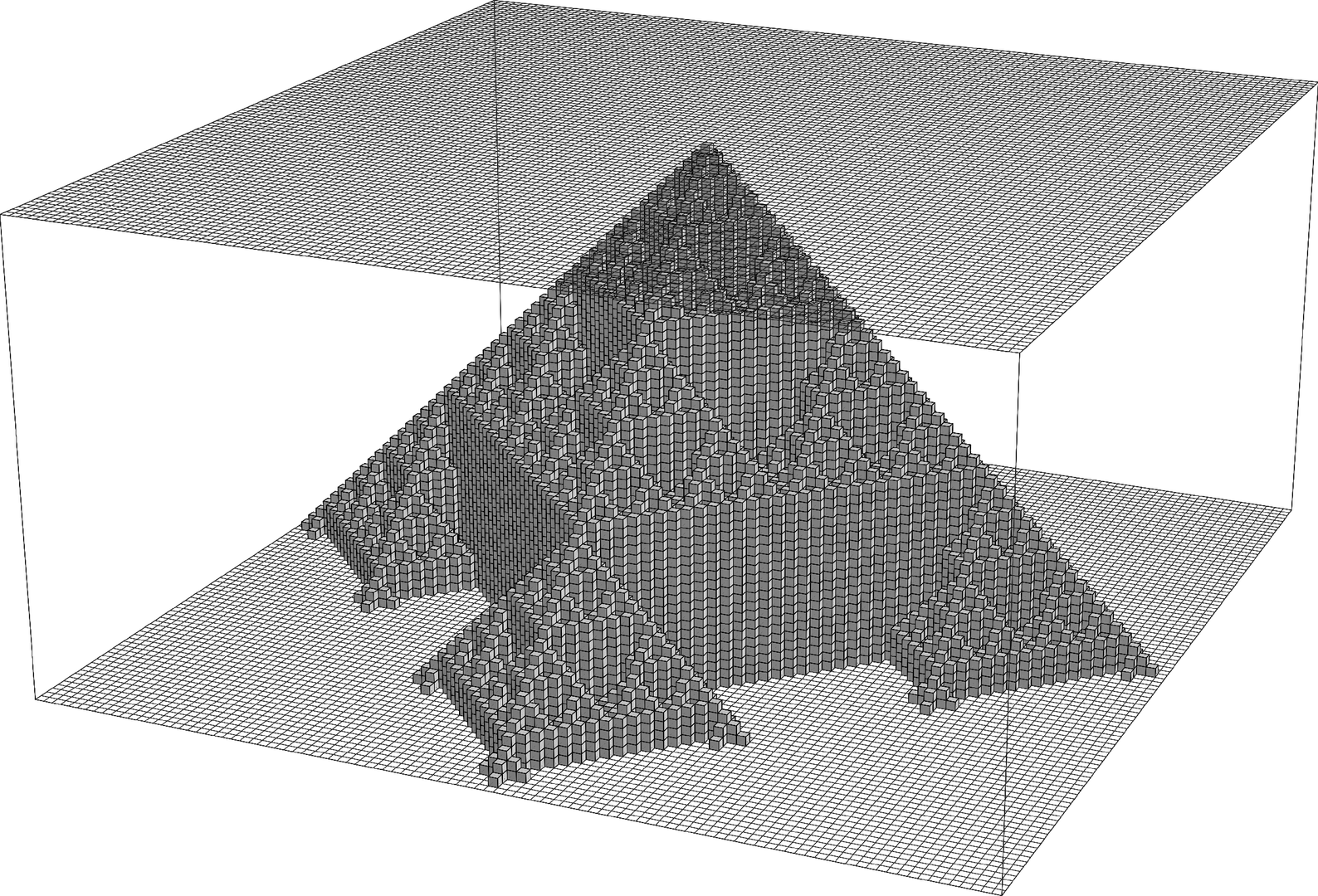The patterns produced in this case no longer have a simple geometrical form, but instead often exhibit an intricate structure somewhat reminiscent of a snowflake. Yet despite this intricacy, the patterns still show great regularity. And indeed, if one takes the patterns from successive steps and stacks them on top of each other to form a three-dimensional object, as in the picture below, then this object has a very regular nested structure.
But what about other rules? The facing page and the one that follows show patterns produced by two-dimensional cellular automata with a sequence of different rules. Within each pattern there is often considerable complexity. But this complexity turns out to be very similar to the complexity we have already seen in one-dimensional

A three-dimensional object formed by stacking the two-dimensional patterns from the bottom of the previous page. Such pictures are the analogs for two-dimensional cellular automata of the two-dimensional pictures that I often generate for one-dimensional cellular automata.